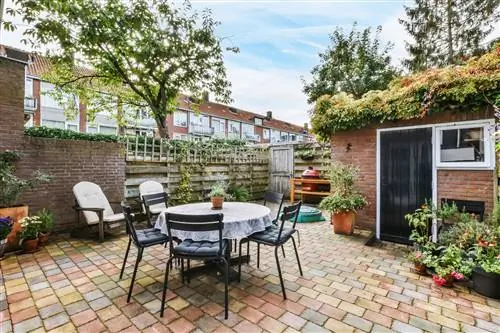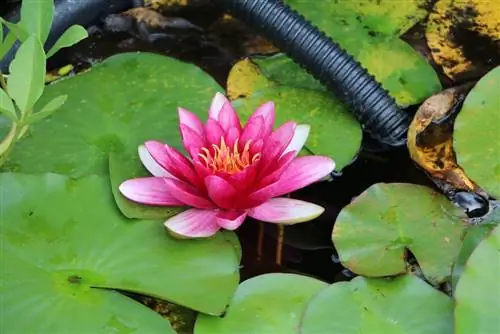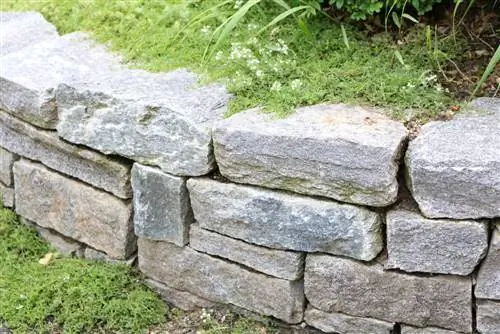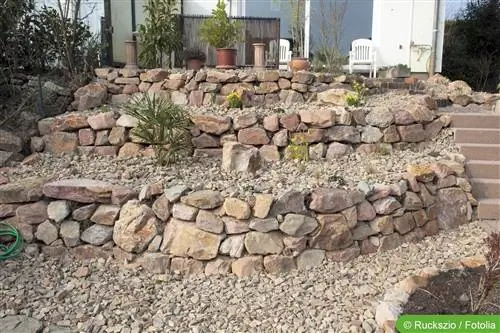- Author admin [email protected].
- Public 2023-12-17 03:39.
- Last modified 2025-01-24 12:45.
The inner courtyard can be ideally converted into a small seating area. You should always adapt the garden furniture, i.e. table and garden chairs, as well as the flowers to the surroundings, such as the masonry. If you want to create a typical courtyard like the one you see in Tuscany, you can particularly use red colors and buy the flowers and garden furniture covers accordingly.
Courtyard Type: Tuscany
If you want to design a typical courtyard like you know from Tuscany, you can particularly use red colors and buy the flowers and garden furniture covers accordingly.
The small metal furniture, which can usually be found in stores under the name bistro tables and chairs, creates a Mediterranean flair. A special variant are the mosaic tables, whose table top consists of many individual stones. A matching metal flower shelf can be set up in which some potted plants can be beautifully arranged. There are also attractive climbing aids made from this material in various shapes, as well as rose arches that can be used as an entrance to the garden. Planters made of terracotta or other ceramics go best with a Mediterranean-style courtyard. If the plants are to remain outdoors in winter, pots made of Impruneta terracotta are best suited because they are frost hardy. Typical plants commonly found in a Mediterranean garden are
- Olive tree
- Lemon and orange trees
- Oleander
- Bougainvillea
In general, a wide variety of plants can be used in the courtyard. Tendrils that climb up the house wall look very beautiful and look magnificent in summer with beautiful flowers - from “wild vine” to ivy.
Climbing plants for greening the walls of the inner courtyard
- Passionflower
- Clematis
- Climbing roses
- Hops
- Wisteria
The walls in the courtyard can also be used to grow espaliered fruit. A grape vine, for example, would be interesting in this regard. Many climbing plants require a trellis or other climbing aid, but some form adhesive roots that they use to hold onto the masonry. The latter require less effort when planting, but they are often difficult to remove without causing damage to the house wall.
Beds along the walls and walls
Small mini beds on the house wall in which herbs grow are also very nice.
This means that the herbs are quickly accessible from the kitchen. Mini beds can also be filled with flowers or green plants. If you place a few bulb flowers such as crocuses and daffodils in between, you'll immediately have the necessary spring decorations. All perennials that are planted only once and bloom again every year are particularly easy to care for.
You can also plant small shrubs or trees such as conifers; But you should pay attention to the size, because they no longer look nice in the courtyard if they are too big.
Small potted plants such as young trumpeter trees or passion flowers also fit well in the courtyard. However, you should make sure that the space is not overloaded. The inner courtyard also thrives on a bit of freedom, which is limited by the house walls.






